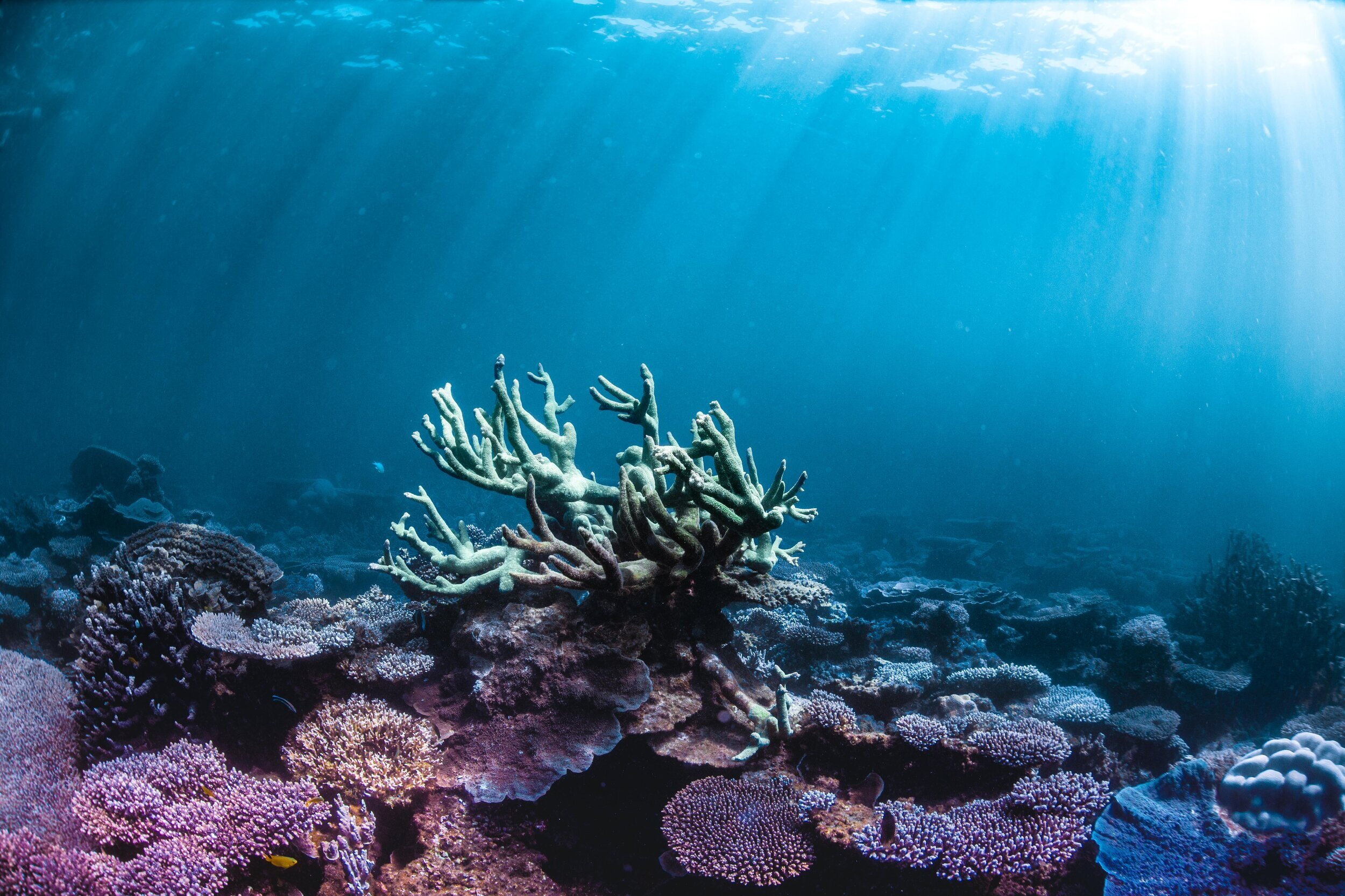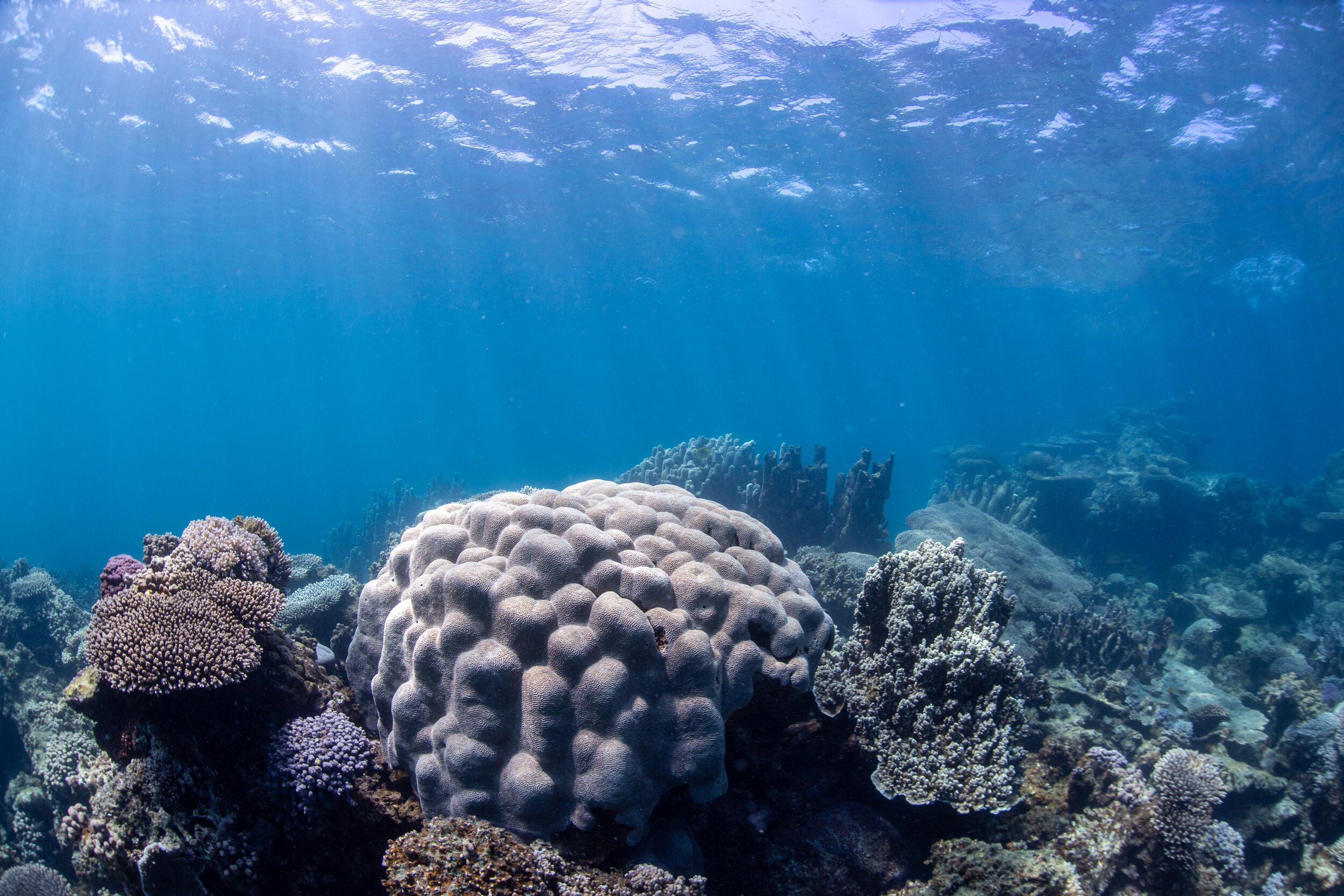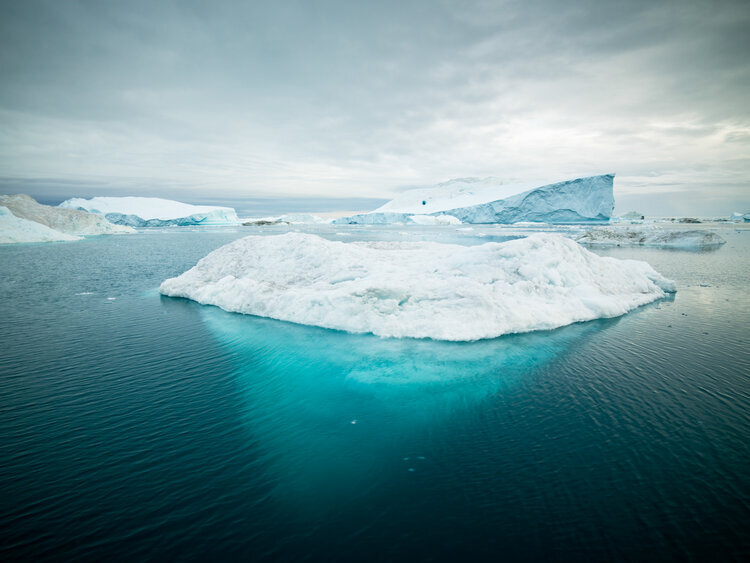Blog
Deep in the waters of the Caribbean and the Pacific coasts of Colombia, magical and awe-inspiring marine life thrives; from majestic humpback whales, hammerhead sharks and huge groupers, to leatherback turtles, sea snakes and colourful coral reefs. The beauty of Colombia’s marine life has been captured by Mariana Rivera - a colombian biologist, underwater photographer and documentary film-maker.
But here we are, at the start of 2021 (2020 is over, phew), so let’s take a minute to forget about everything that’s gone wrong and think just for a little while, about some of the things that have gone right. Because there are a lot of really great people doing really great things that deserve a bit of recognition too. So sit back (festive beverage optional), relax, and enjoy some of the little wins our big blue friend has achieved this year.
The word “arctic” brings to mind ice, glaciers, polar bears, the North Pole and maybe even Santa Claus! This seemingly barren landscape of ice, snow and water is actually home to 5,500 species of wildlife, many of which live beneath the near freezing water (28.8°F, -1.8°C).
A few years and career moves later, I find myself as an aquarist at the New York Aquarium (NYA). For the first time, I can confidently tell people that my job doesn’t feel like “a job”, which is something I have been wanting to find for a very long time. At NYA, I am one of the aquarist who is primarily in charge of the Conservation Hall galleries.
Before you begin reading this blog, I would like you to take a few seconds to reflect on the following questions: what does ‘ocean acidification’ mean to you? Do you consider that stressors such as marine plastic pollution need more urgent attention? How visible or invisible is ocean acidification in your life?
What covers 75% of the earth and has the ability to deteriorate CaCO3, the same material our bones are made up of? Our oceans!
Here’s the chemistry crash course you didn’t ask for: Acidity is measured in pH on a scale of 0 (most acidic/least basic) - 14(most basic/least acidic). Each number on the scale indicates a 10x difference in acidity or alkalinity. Something with a pH of 1 is 10x less acidic than something with a pH of 0. Liquids become more acidic with the presence of positive Hydrogen Ions (hydrogen with less electrons).
It is not easy to expose my feelings and thoughts while writing this letter. I guess it is the anxious mind crying out to be concealed; telling me that I am making a fool of myself in being vulnerable in front of many strangers. “What will they think of me?”, is the first question that rises in my head. ‘‘Are they going to think that I am a ‘weak’ person?’’ I’ve come to hate that word ‘weak’ but it still resonates in my head when I’m being caught in a whirlwind of thoughts.
Fear and excitement filled my body when we got the long anticipated email about returning to the lab after lockdown. I began this year in the West Highlands of Scotland, In a beautiful coastal town called Oban, with a population of 8,500.
Northern Ireland is a small part, of a small island, off the west coast of the United Kingdom. If you’ve heard of my home country then you’re likely to know us for the Giants Causeway (a bunch of basalt columns), the Titanic (the most famous ship that sank), or The Troubles (our troubling history). But there is a valuable part of our heritage that has been lost in cultural memory – our sharks, skates and rays (elasmobranchs).
At the age of 12, I was on vacation and asked to assist in an emergency wild sea turtle nest removal mission. That day was the a catalyst of my career and my life to protecting nature as a field biologist. I left my home during the pandemic and travelled across the US to work under the National Park Service as a Kemp’s Ridley Biotech. So yeah, I love sea turtles. But I can’t be fully on board with the straw ban.
The first time I saw stony coral tissue loss disease, I knew it could mean the end of these beautiful coral reefs that I grew up with, unless we act now!”
The Twilight Zone was not just a hit TV series by Rod Serling. But the counterpart which shares its name, “Coral Reef Twilight Zone”, captivates audiences just as much.
World Ocean Day feels a little different this year. Heck, everything does. During this time of the COVID-19 pandemic, and a fight for racial justice, some us have retreated from others, some have sought creative ways to cope with lingering anxiety and the thought of the unknown, and some have taken their anger and sadness to the streets in the form of protests.
Due to the safety precautions put in place to protect communities from the COVID 19 outbreak, there has recently been a collapse of the tourism industry. I thought this would be an excellent opportunity to reflect on the impact that tourism has on coral reefs.
The microbiological organisms of the marine world create a splash way too big for their size. The feats of the tiny range from resourceful to beautiful and even frightening. Coccolithophores have been impacting our world since the day they first evolved. Here are the ways that microscopic creatures impact the marine world.
According to the Spruce website, this month is “Expanding Girls' Horizons in Science and Engineering Month”. And according to the WOS blog calendar, this month’s topic is also oceanography. I thought I utilize this opportunity to explain the different types of oceanography for anyone thinking of going into the field or switching careers.
If you have never heard of a coral reef before, this is the perfect film to spark your interest in the world of Coral Science. I was immediately drawn in by the question posed by Dr. Ruth Gates: “What’s the risk of doing nothing?”
Are you being affected by Climate Grief? Because I sure as hell am.
Why are we unable to retain women and help them progress in STEMM careers?
Manatees, or sea cows, as they are sometimes (affectionately?) named, are marine mammals that can grow up to 3.5 m long and weigh a whopping 450 kg
New York City is often called the concrete jungle. Although there are various parks, most of the wildlife consists of birds, squirrels, and people. However, there is a new star in town that’s far too big for Broadway. Move over Lin Manuel Miranda! Idina Menzel and Kristin Chenoweth make room because whales are back in New York City!
Working in an environmental field can sometimes mean hard work and perseverance, despite global setbacks, to protect our natural resources. With climate change already impacting the arctic, it may seem like all good news for this particular region is long gone. However, Canada has given conservationists a recent glimmer of hope as Prime Minister Justin Trudeau has highlighted climate change as a clear concern for all departments of his government
The Polar Regions (Arctic and Antarctic) play a hugely important role in helping us understand how the Earth works. Our Earth is a global system, with all regions having an interconnecting role. The polar regions are immensely integral components of the Earth system yet due to how remote they are they are poorly understood.
If you live anywhere that gets cold, you’ve been told to not eat the yellow snow. But no one told us what to do with pink snow. Places around the world are starting to experience watermelon snow a.k.a. “blood snow”. Don’t worry no one got hurt. This isn’t the ‘White Christmas’ episode of Black Mirror. It’s actually due to an algae, Chlamydormonas nivalis, expressing natural red/pink pigment to protect itself from UV rays.
Every year 8.8 million tonnes of plastic are dumped into our seas which has a devastating impact on marine wildlife. CuanTec is a Scottish marine biotechnology company with an innovative answer to the plastic problem through their food-safe packaging made from langoustine shells.
With the looming threat of overfishing, and human health problems coupled with the push for sustainable fisheries, the seafood industry is seeing a trend in alternative options, much like the meat industry. With substitute meat products like Beyond Meat and the Impossible Burger grabbing headlines, the noticeable gap in alternative seafood options has been recognized, and thus, is beginning to ramp up
Climate change is responsible for devastating and, in some cases, irreversible changes to our marine environment. The Intergovernmental Panel on Climate Change (IPCC) recently released a ‘Special Report on the Ocean and Cryosphere in a Changing Climate’. The report paints a harsh reality for the future of our beloved marine environment: ocean warming will continue, heat waves will become more intense and frequent, sea level will continue to rise, and out of all of our marine and coastal ecosystems, coral reefs will face the greatest risk under future climate change.
The communities of Fire Island, NY host around 4,200 houses that in the summer time are flooded by families, artists, musicians, scientists, seasonal workers, and friends. It’s a laid back lifestyle that includes waving to everyone you see with a smile, never wearing shoes, and embracing a layer of salt on your skin that you can just never wash off.






























